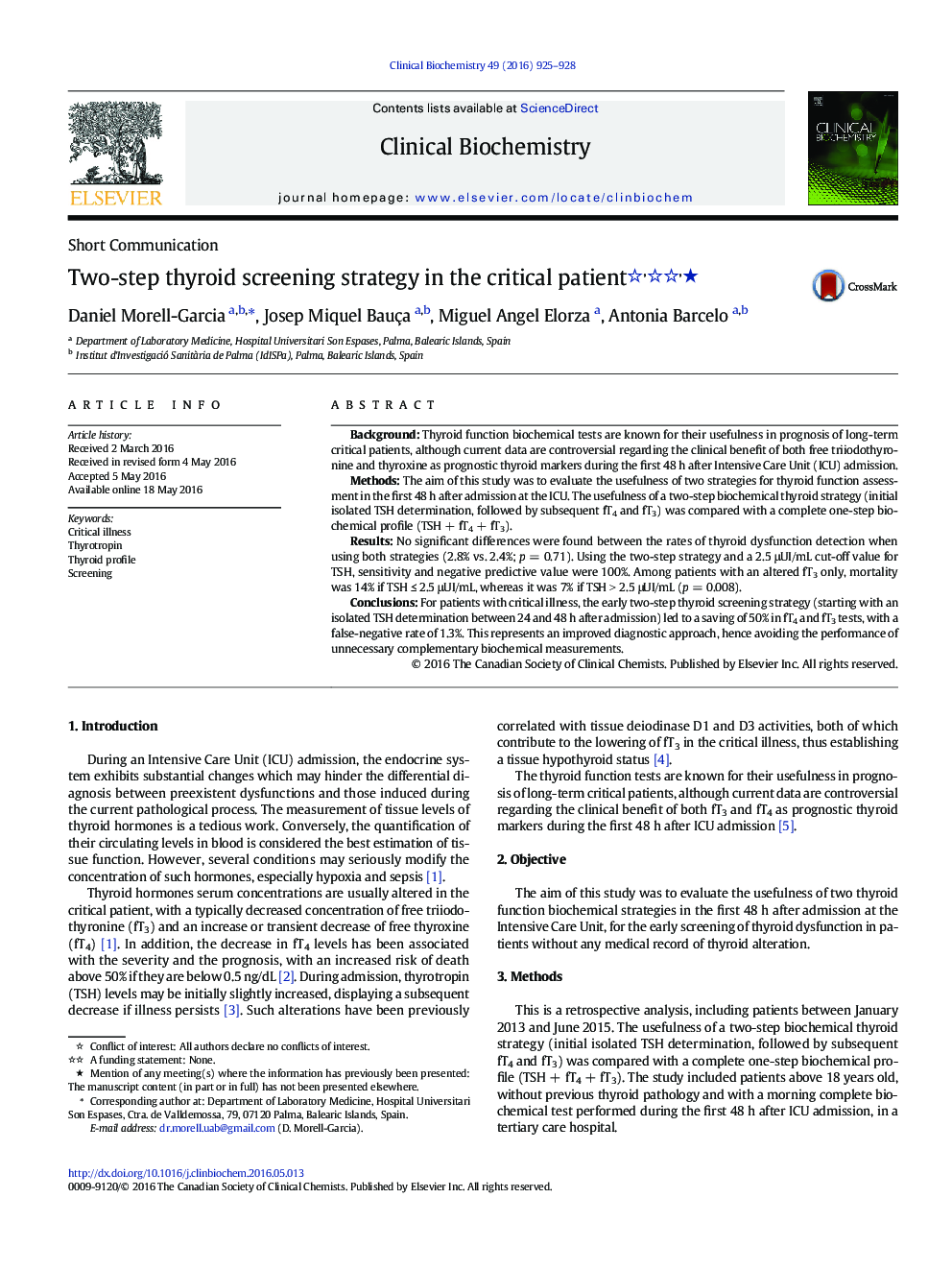| کد مقاله | کد نشریه | سال انتشار | مقاله انگلیسی | نسخه تمام متن |
|---|---|---|---|---|
| 1968516 | 1059723 | 2016 | 4 صفحه PDF | دانلود رایگان |
• For patients with critical illness, the early two-step thyroid screening strategy led to a saving of 50% in fT4 and fT3 tests.
• Screening with fT4 and fT3 is recommended only for patients with initial TSH values below 2.5 or above 5.0 μUI/mL.
• Among patients with an isolated fT3 alteration, mortality was lower in patients with TSH concentrations above 2.5 μUI/mL.
BackgroundThyroid function biochemical tests are known for their usefulness in prognosis of long-term critical patients, although current data are controversial regarding the clinical benefit of both free triiodothyronine and thyroxine as prognostic thyroid markers during the first 48 h after Intensive Care Unit (ICU) admission.MethodsThe aim of this study was to evaluate the usefulness of two strategies for thyroid function assessment in the first 48 h after admission at the ICU. The usefulness of a two-step biochemical thyroid strategy (initial isolated TSH determination, followed by subsequent fT4 and fT3) was compared with a complete one-step biochemical profile (TSH + fT4 + fT3).ResultsNo significant differences were found between the rates of thyroid dysfunction detection when using both strategies (2.8% vs. 2.4%; p = 0.71). Using the two-step strategy and a 2.5 μUI/mL cut-off value for TSH, sensitivity and negative predictive value were 100%. Among patients with an altered fT3 only, mortality was 14% if TSH ≤ 2.5 μUI/mL, whereas it was 7% if TSH > 2.5 μUI/mL (p = 0.008).ConclusionsFor patients with critical illness, the early two-step thyroid screening strategy (starting with an isolated TSH determination between 24 and 48 h after admission) led to a saving of 50% in fT4 and fT3 tests, with a false-negative rate of 1.3%. This represents an improved diagnostic approach, hence avoiding the performance of unnecessary complementary biochemical measurements.
Journal: Clinical Biochemistry - Volume 49, Issue 12, August 2016, Pages 925–928
